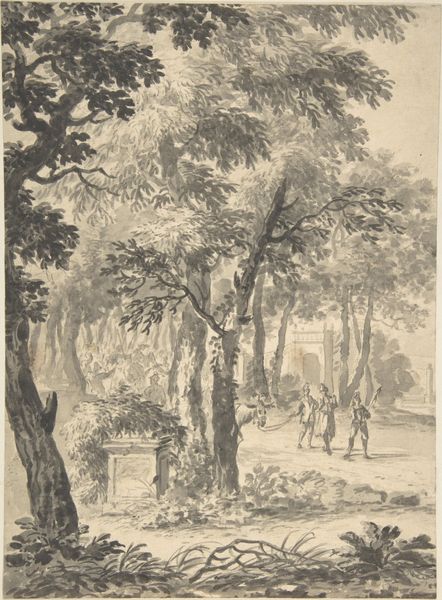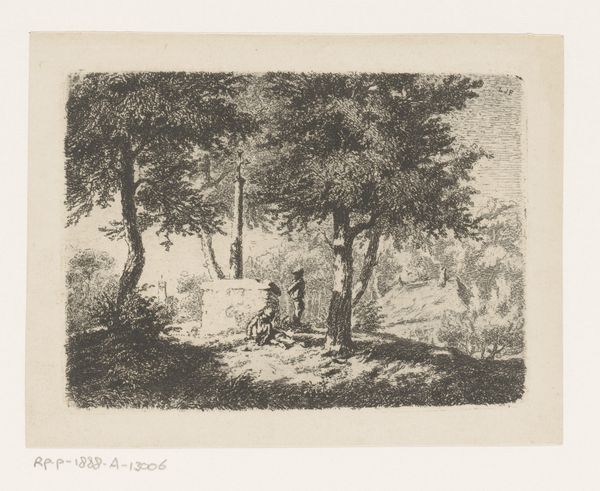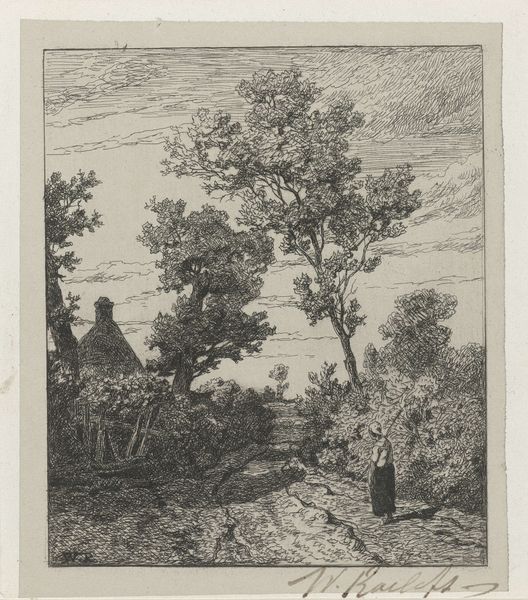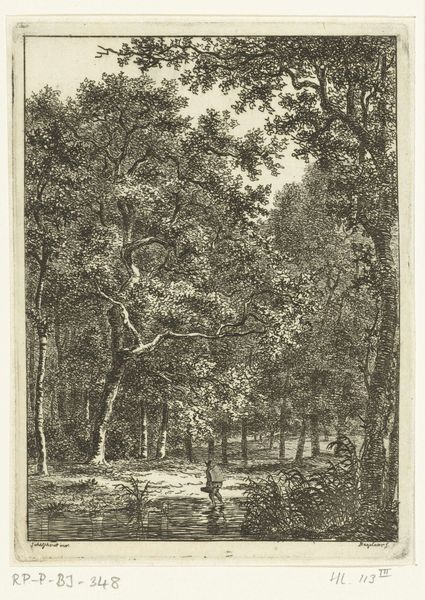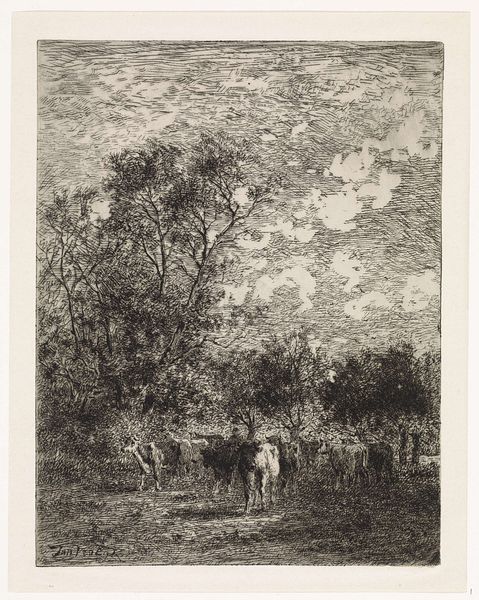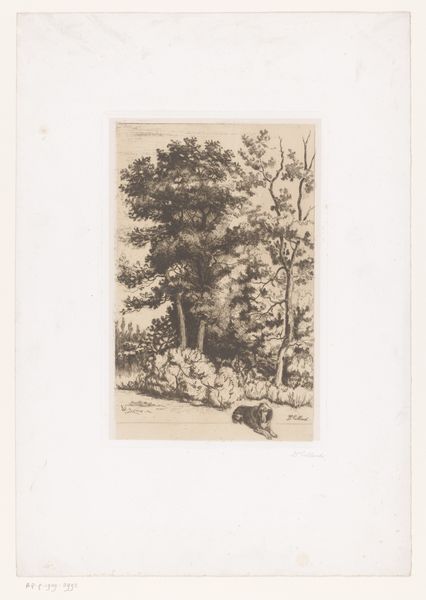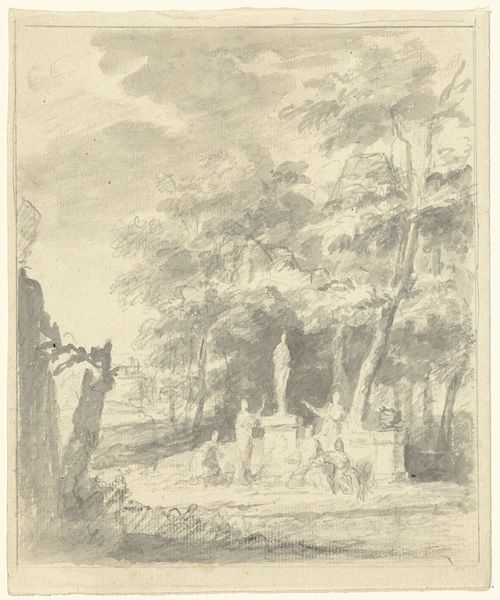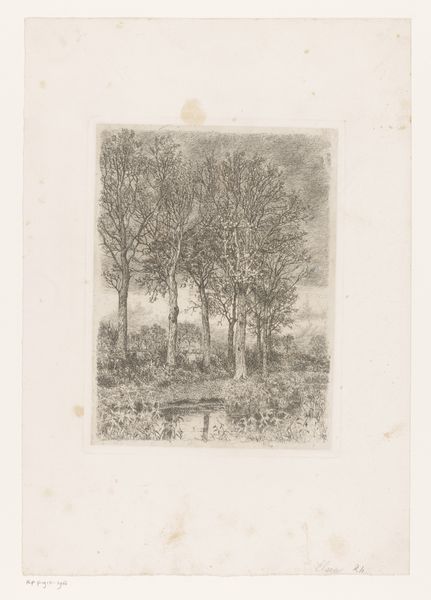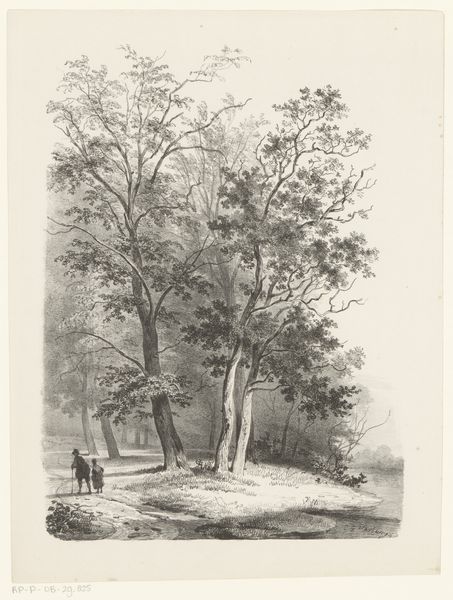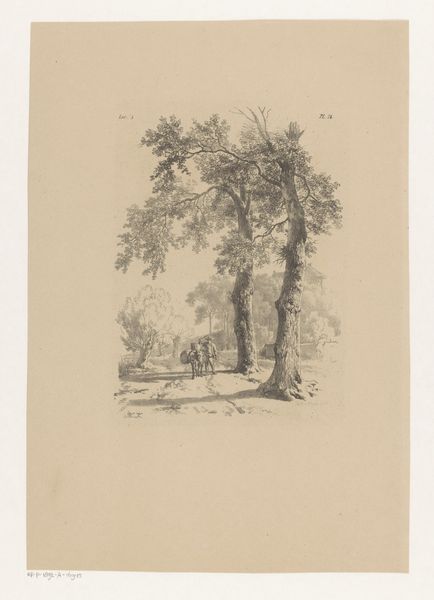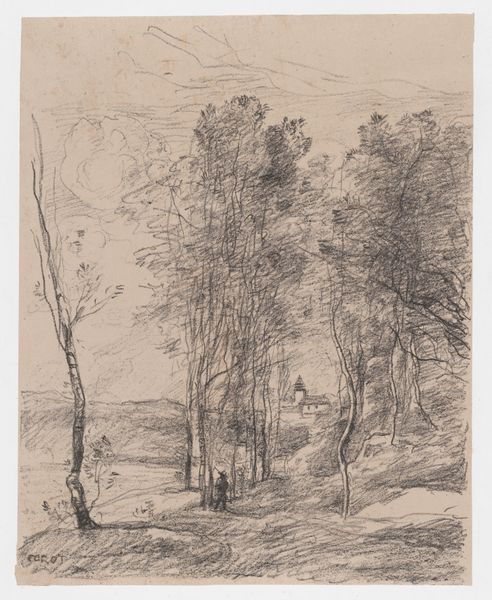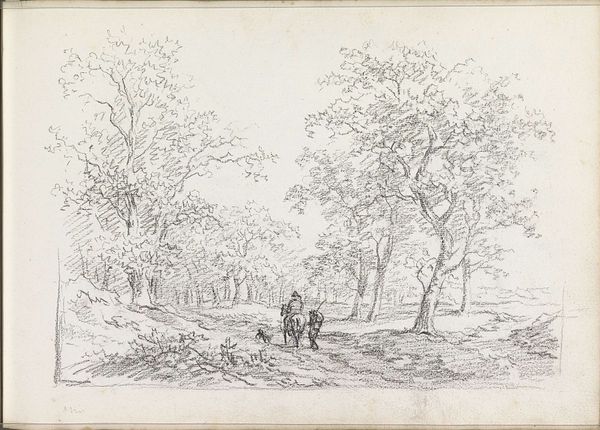
drawing, print, etching
#
tree
#
drawing
# print
#
etching
#
landscape
#
realism
Dimensions: height 240 mm, width 158 mm
Copyright: Rijks Museum: Open Domain
Anton Mauve created this etching, Bij Kranenburg, using a metal plate, acid, and ink. Rather than directly applying paint, Mauve harnessed a chemical process to make the image. Lines were etched into the metal, which was then inked and pressed onto paper. The result is a textured surface, where the ink sits slightly raised, giving a tactile quality to the image. The etching process allowed Mauve to create fine, detailed lines, capturing the intricate details of the landscape, like the leaves on the trees and the rough texture of the wooden fence. Mauve's choice of etching reflects a broader interest in printmaking during the 19th century, when artists explored techniques that allowed for the reproduction and dissemination of their work to a wider audience. While oil paintings were exclusive objects for the wealthy, etchings could reach a broader public, and thus, we can see how the choice of material and process is deeply connected to social dynamics. It challenges traditional hierarchies between fine art and more accessible forms of visual expression.
Comments
No comments
Be the first to comment and join the conversation on the ultimate creative platform.
